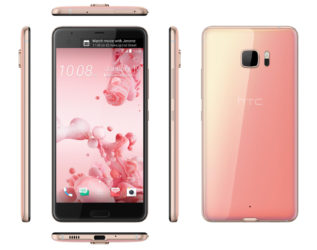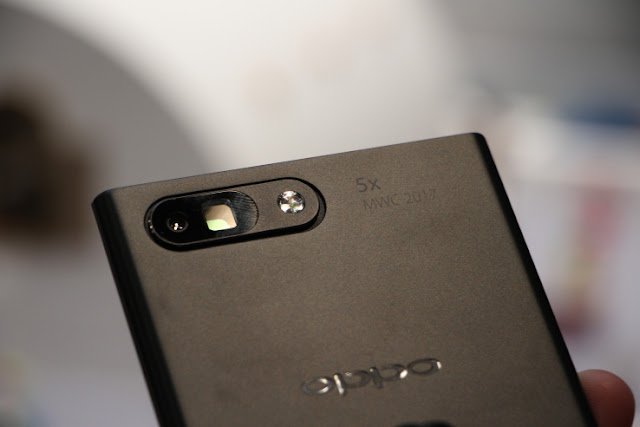Companies like Gionee became more and more known to the audience with their step towards the smartphone world. With new models featuring unique prices and specs, people are actually loving them and looking forward to getting the best deals around. Being Chinese, they were more familiar with the Asian regions, but with time – they became known to the Western world as well. Taking a look at the newest phone brought up by the company, the Gionee Marathon M5 comes up to deliver a mid-ranged set. With decent features to let anyone perform their day-to-day functions, the phone is worth looking at.


On the other hand, Philips has too stepped up with some decent smartphones among which their Xenium W6610 is looking forward to providing the customers what they are looking for. While both smartphones power similar battery levels, their specs are what people would like to hear about. So, the discussion for the specs and the built quality can be seen down below.
Externals: Design and Display:
The Gionee Marathon M5 has been included with a 5.5-inch AMOLED capacitive touchscreen show, which delivers 16M hues at HD determination of 720 x 1280 pixels with 267ppi pixel thickness. This presentation is sufficiently proficient to create fresh hues and decent survey points. You can expect a normal execution from this presentation while watching features or playing diversions.
On the other side, the Phillips Xenium W6610 sports a 5-inch IPS LCD show, which likewise creates 16M hues at a determination of 540 x 960 pixels with 220ppi pixel thickness. While contrasting, it can be effectively expressed that the Gionee Marathon M5 with greater and better show is the champ in the first portion. The quality design presented in both the phones is quite decent for sure.
Internals: Hardware and Software:
The Gionee Marathon M5 works on the most recent Android 5.0 Lollipop out-of-the-container while the Phillips Xenium W6610 features Android 4.2 Jelly Bean OS. Your multi-tasking requirements can be fulfilled with the two phones for sure. The Gionee Marathon M5 is endowed with a 64-bit 1.5GHz MediaTek MT6735 SoC, quad-centre processor combined with 2GB RAM. In correlation, the Phillips Xenium W6610 is controlled by a 1.3GHz quad-centre processor with RAM of 1GB. With 2GB of RAM, the Gionee Marathon M5 has substantiated itself as the victor in the second portion also. The Gionee Marathon M5 is a force stuffed Dual SIM Android Smartphone, which can without much of a stretch run all real Android applications and recreations, you need it to run. It can, undoubtedly, run various applications together with no nuisance. Besides that, you get Gionee Marathon M5 with 16GB Internal, 64GB Expandable through MicroSD Card and Phillips Xenium W6610 with 8GB Internal, 32GB Expandable through MicroSD.
Solid battery with additional long talk time and standby hours is the USP of both these cell phones. For which, the Gionee Marathon M5 is fuelled by two 3000mAH batteries, which is equivalent to 6000mAH. This cell phone elements converse charging mode also which implies that it can be utilized as a force bank to charge different gadgets too. On the other side, the Phillips Xenium W6610 has been fuelled by a 5300mAH Li-Ion battery, which guarantees 1604 hours of standby time and 33 hours of talk time.
Camera and Connectivity:
For your photography needs, the Gionee Marathon M5 houses 13 Megapixels (4128 x 3096) self-adjust back camera highlighting LED streak, Panorama, HDR, Geo-labelling, touch centre, grin/face discovery and that’s just the beginning. This cell phone has got 5 Megapixels front-confronting camera for catching your selfies on-the-go. The Phillips W6610 houses an 8 Megapixels (3264 x 2448) self-adjust back camera with LED glimmer and comparative elements. For your selfies, this cell phone has got 1.2 Megapixels front-confronting camera. The Gionee Marathon M5 with a superior back and front-confronting camera makes headway with one stage by and by.
For connectivity, both phones feature – Dual SIM, Bluetooth 4.0 with A2DP, GPS with A-GPS, Wi-Fi with Wi-Fi Hotspot, MicroUSB 2.0 and 3.5mm Audio Jack. There is not much difference looking at the connectivity aspects for the two phones. Moreover, the sensors are also quite similar in both phones.
Conclusion:
While looking at the Gionee Marathon M5 and Phillips Xenium W6610, we found that the Gionee Marathon M5 is much better than the Phillips W6610 in every angle. On the other hand, this doesn’t imply that the Phillips W6610 is an under-controlled or awful arrangement. The contrast between their equipment details and OS backing is simply because of the colossal hole between their stickers.
The plus point of these two cell phones is their additional solid battery, which runs them for long time on-the-go. This is the place, both these cell phones are perfect victors and absolutely justified regardless of your well-deserved cash. A definite conclusion stays in your grasp. In the event that your financial plan permits, feel free to purchase Gionee Marathon M5. Something else, the Phillips W6610 is additionally not an awful arrangement. Despite it all, people have a variety of factors that enable them to choose between phones. They might look up for models on the basis of the brand names, or they might prefer them for the specs. Overall, it would be a favourable deal to get any of them. Battery life for both is not the question as it is way up the league compared to other smartphones.
You can get the Gionee Marathon M5 from the Nigerian market at 370 USD while the Philips Xenium W6610 is priced at 459 USD. Do remember that the price for such phones might change with the upcoming period and would greatly affect the sales as well. So, your best buying period could be now or later depending upon your budget and urgency. In any case, you could choose the better among the two or stick to the brand name that is more reliable.















































